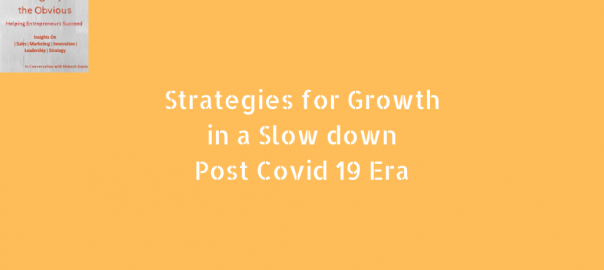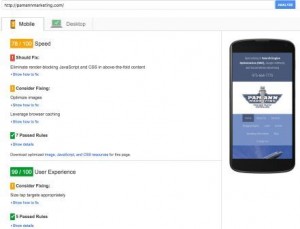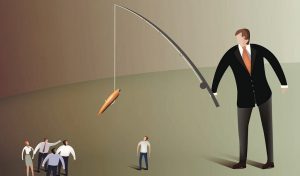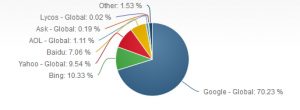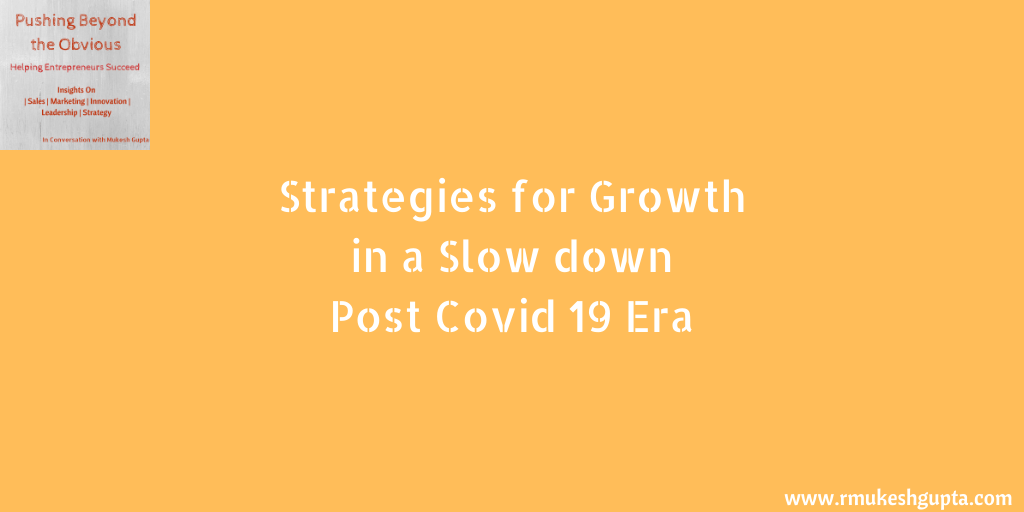
Premise:
We are all living in an almost once in a lifetime situation with almost entire countries and continents being forced to stay at home due to the current pandemic situation. We are now at a time when almost all the countries are looking forward to gradually opening up the lockdowns and allowing people to restart their work, albeit in a controlled fashion. What this means is that at some point in the next few weeks, every one of us is going to have to return to work, work that will, in all likelihood not be the same as before the pandemic hit.
Irrespective of whether you are an entrepreneur or an intrapreneur or a business leader, all of us will need to figure out what the new normal is going to look like. In some cases, we can define what the new normal will be for each one of us.
Almost everyone who is in the prediction business is currently out there predicting that the next few months is not going to be easy for all kinds of businesses. People might lose jobs. Businesses who don’t find ways to bring in new customers could wind down resulting in more job losses.
It is in this environment that I saw a session delivered by Porus Munshi for TiE Surat. I am privileged to know him and having worked with him in the past. In the session, he shares his insights on what could businesses learn from the past and from other businesses about finding, retaining and delighting customers. You can watch the entire session (almost an hour long) above. If you have the time, I would strongly urge you to watch the same (
Premise:
We are all living in an almost once in a lifetime situation with almost entire countries and continents being forced to stay at home due to the current pandemic situation. We are now at a time when almost all the countries are looking forward to gradually opening up the lockdowns and allowing people to restart their work, albeit in a controlled fashion. What this means is that at some point in the next few weeks, every one of us is going to have to return to work, work that will, in all likelihood not be the same as before the pandemic hit.
Irrespective of whether you are an entrepreneur or an intrapreneur or a business leader, all of us will need to figure out what the new normal is going to look like. In some cases, we can define what the new normal will be for each one of us.
Almost everyone who is in the prediction business is currently out there predicting that the next few months is not going to be easy for all kinds of businesses. People might lose jobs. Businesses who don’t find ways to bring in new customers could wind down resulting in more job losses.
It is in this environment that I saw a session delivered by Porus Munshi for TiE Surat. I am privileged to know him and having worked with him in the past. In the session, he shares his insights on what could businesses learn from the past and from other businesses about finding, retaining and delighting customers. You can watch the entire session (almost an hour long) above. If you have the time, I would strongly urge you to watch the same here).
This post will be about some of the strategies that he shares in the video and some strategies that I will add on top of what he has already shared. So, here we go:
Strategy 1: Seek –> Sense –> Respond
As humans, when we sense danger, we typically reach in one of three ways – Fight, Flight or Freeze. Typically, when organisations face a crisis situation like the one that we are currently facing, they react in similar fashion as well. They do one of the following:
Ignore: They wait for things to come back to normal, the way things were before the crisis hit them. They think that by not acknowledging the magnum of change that this crisis is bringing to them and their businesses, they feel that they will not have to respond. These are businesses, which will act as if nothing has changed. They are the most at risk of going out of business.
React: These organisations will actively fight with the current situation. They will do more of what they used to do in the past. They will double down on their programs (marketing, sales, production, procurement. These organisations will find that the environment in which they are now operating in has changed in so many different ways that their past strategy is no longer working. What used in the past is no longer working for them. This will create frustration not only to the people working in the business but also to their ecosystem (partners, employees and customers).
Respond: These businesses will seek to understand what is happening around them. Make sense of these changes. And then figure out the best response to these changes. These are the businesses that will find that in every crisis lies great opportunities.
Seek ïƒ Sense ïƒ Respond: Set yourselves up to seek what is happening around you. Make sense of what is happening and then respond with an informed and strategic response.
Strategy 2: Shifting Mindsets – From Crisis to Opportunities
One of the first things that we need to do in order to change our behaviour is to change our mindsets and belief system. Just consider the following example.
Let’s say you decide that you want to buy a car and have shortlisted a specific model from a brand. All of a sudden you will start seeing that model everywhere you go. It is not that there are suddenly more cars of that model on the road, but just that you have started noticing that specific model a lot more than what you used to do.
This happens because by the act of shortlisting that specific model, you have told your subconscious mind that this specific model of car is important for you. Hence, it decides to not filter that out as noise.
The same thing happens with everything else. If you train your mind to see opportunities, you will see them all around you. If you train your mind to see crises, you will see them all around you. This is especially true in times of crisis. When you see crises all around you, it takes a conscious effort to see opportunities.
Strategy 3: Be in Service of your customers
One way to look at opportunities is to find ways to add value and stay in service of your customers, prospects, partners or society at large.
All of us can learn from the story of a surgical shop in Kerala. When Covid 19 was spreading and there was a spike in demand for a face mask, you started seeing shops starting to hoard the masks and sell them at a premium. However, a surgical shop in Kerala’s Kochi is acted like a good Samaritan and has made the masks available at a price of Rs 2 per piece to the most needy- hospitals and medical teams. They bought the masks at Rs 10 per piece and sold it at Rs 2, thereby incurring a loss of Rs 8 per mask. The sold more than 5000 masks within 2 days. They did so in service of their customers/prospects and also for the society at large.
We need to remember that in times of crisis, emotions run high. In such a situation, if someone takes care of you, the chances that you will remember their act of service and respond in kind when the opportunity presents itself. It is not to say that the owners of the surgical shop acted on the potential quid-pro-quo. This only works when you truly do this in service and not expecting any kind of return.
Strategy 4: Do a Fosbury Flop
Porus, in his talk, shares the story of how one man changed the way the world of athletes do high jump. He shares the story of Dick Fosbury and his antiques at the 1968 Olympics and how it changed high jumping forever. He did the opposite of what everyone else was doing and did so after having thought through the science of centre of gravity.
We can bring that same level of focus in our business and do a Fosbury flop as well. You can be certain that at this time of crisis, every one of your competitor will be fighting to sell their products or services to their customers.
What if instead you focused on getting your customer more business. What if you could come up with unique ways of promoting your customers business. Irrespective of the results that you get, I am sure that you will get noticed. And if you do get good results (which is not only possible but also very likely if you apply your creativity), then you not only get your customers attention but also their loyalty for the long term.
The reason this is possible is because of a simple hack of how humans work. When you are trying to brainstorm for ways to increase your business, the chances are that you might get stuck often and most likely, you might not get truly creative ideas. This is because you are too close to your own business and the risk of failure and what that means for your business might keep you and your team from following breakthrough ideas.
However, if the ideas are for someone else’s businesses, you will find that your creative juices will flow easily and you will be able to come up with some really creative ways to promote your customer’s business.
Brainstorm ideas about what you would typically do and then try and find a way to go in the opposite direction. If you would typically increase your ad spend, decrease it and vice versa. IF you typically would go aggressive on discounting, try to come up with a service which allows you to increase your pricing or vice versa. You get the point.
Strategy 4: Other side of the moon
It is a well-known fact that we only see one side of the moon from anywhere on the earth. This is because of what they call “tidal locking”. That doesn’t mean that the moon doesn’t have any other sides. Exactly the same way, every situation or challenge that we face, we usually tend to see only one face or one perspective of the problem. The moment, we recognise that and are able to look at all the different perspectives, we have the ability to come up with interesting and creative solutions.
The same way, look at your current ways of prospecting and the value that you bring to your prospects/customers. Is there a different perspective that you can see of:
– A new way to add value to your customers?
– A new way to find new prospect?
– A new way to convert your prospects to customers faster?
All of these are great ways for you bring in additional revenue, one that could potentially be unique to you and your way of doing business.
He talks about the “Pure for Impure” strategy run by Tanishq, where they were willing to exchange impure gold jewellery with pure jewellery at no extra cost to the customer. This one strategy enabled them from being a loss making unit to an extremely profitable unit for their business and established them as the gold standard in gold jewellery in India.
He also talks about how another jewellery store, Lalitha Jewellery is taking the consumer’s view and instead of talking about design and hiring expensive models, simply has their CEO talk about how customers should buy gold jewellery. He shines the light on many hidden charges that consumers have to pay when buying jewellery and thereby differentiates his business from all his competitors. Instead of focusing on the product, he focuses on the consumer’s perspective.
Strategy 5: Create an ecosystem:
Porus also talks about how someone’s problem could be your solution and how your problem could be the solution to someone else problem. You just need to find these people who either solve your problem or whose problem you can solve. The question is how do you find these potential partners.
In most cases, they are hiding within your existing value chain. You just need to look for them consciously. They might be one of your vendors or your vendors customers or your customer’s vendors or your customer’s customers or even your competitors vendors. In some cases, they can even be one of your existing competitors in a different market that you operate in. You just need to look for them.
You can also explore partnering with unusual partners. Applying the strategy of going the opposite direction of what everyone else is doing, you find out that all of your competitors are typically partnering with large SI’s, then you could go find out start-ups in that field or smaller SI’s and partner with them by enabling them to become successful, thereby creating your success.
Applying the strategy of the other side of the moon, reflect on the different perspectives of how you engage with your existing partners and see if there is an opportunity to expand your relationship. Explore if you can compete not as individual firms but as an ecosystem or a conglomeration of firms, thereby increasing your marketing and sales muscles. Explore if you can partner with others who also sell to your existing customer category and explore if you can help each other out.
In conclusion:
Each one of these strategies in isolation can be applied to accelerate growth for your business. However, the true power of these strategies are unleashed when you are able to use many of them and build upon one another. When used together they can bring about remarkably creative strategies to grow your business. In conclusion, these strategies can be applied to all businesses, irrespective of their size or the industry that they operate in.
Business & Finance Articles on Business 2 Community
(19)
